Many utility companies around the world employ incentive programs to encourage their customers to switch to more energy-efficient equipment in their homes and non-residential facilities. Though we live in a world of high-energy consumption, we are also in the age of innovation. Technology is at a place where sustainability has become the focus. Companies such as Big Shine Energy, partner with utility companies to give their customer solutions to help them save on energy and money, which ultimately helps save the environment.
Energy Consumption is High
Did you know that the world consumes around 140 trillion kWh of energy per year? That means that about 820 million tons of carbon dioxide are emitted into our atmosphere annually!
Figure 1: Annual energy consumption vs. CO2 emissions

Electricity is used at a high rate in commercial and industrial facilities. According to the U.S. Energy Information Administration (EIA), of the 272.3 quadrillions Btu (293 million kWh) that industrial and commercial sectors consume on a global scale, electricity consumption makes up about 20%. These figures are only projected to increase in the next few decades as seen in Figure 2.
Figure 2: U.S. Energy Information Administration Energy Use

The U.S. alone contributes 49.8 million kWh (or 17%) of the total industrial and commercial world consumption—8% being electricity, according to EIA. And the U.S. Department of Energy identified lighting as the largest source of electricity consumption for commercial buildings.
Result of our energy consumption
The largest share of carbon dioxide emission in the U.S. comes from the production of electricity. Commercial buildings are responsible for 18% of CO2 emissions because they greatly depend on electricity to meet their energy needs – not just in lighting but also HVAC and other equipment. However, the U.S.
Figure 3: U.S. Energy Consumption

Environmental Protection Agency says that the average building in the U.S. is about 30% inefficient. This means that if more companies switch to more efficient lighting and HVAC systems, our carbon dioxide emissions as a nation could greatly diminish.
The statistics resulting from the global and national energy usage and environmental impact is overwhelming, so how can business owners make a difference?
Relieving the energy load
Budget, environmental well-being, and work conditions tend to influence the decisions that commercial and industrial business owners make when switching to energy efficient solutions.
Savings and budget
Energy is a high factor in a company budget. Annually, commercial buildings consume $190 billion in energy and are responsible for 36% of all the electricity consumed in the U.S., according to U.S. Department of Energy. Choose Energy reported that the average U.S. business consumes about 6,278 kWh of electricity each month, which equates to an average monthly bill of $655. However, the average monthly bill in the industrial sector is $6,712.
Saving energy can help alleviate a lot of financial burden and overhead costs that come with high energy consumption. Also, by choosing the energy-efficient path, inevitable costs associated with facility maintenance can noticeably reduce. Facility managers can turn their financial focus to other aspects of his or her business and enhance productivity and capital growth.
Green planet
Reducing energy use can positively impact the environment, seeing as commercial buildings alone produce 18% carbon emissions in the U.S. Switching to more energy-efficient means can help offset harmful air pollution. Doing so has the potential to relieve the effects that harmful emissions have on human health and climate change caused by global warming, as reported in the Fourth National Climate Assessment.
Quality of life for employees
Making the switch can improve the overall comfort of employees and staff. It promotes productivity in the work environment, whether it’s an office setting or manufacturing facility. Take lighting, for example. Switching from traditional bulbs to energy-efficient LEDs can reduce eye discomfort and headaches caused by flicker. Since LEDs don’t emit UV radiation, they are safe for use in facilities that deal with certain chemicals or food, as well as close-proximity working conditions. Mercury, a toxic substance found in traditional lighting, is absent in LED lights, making LEDs a safer choice for the workplace. With proper assessment and consideration, working conditions and spaces can positively transform to become more efficient, modern and comfortable for customers and employees.
Incentives make the energy-switch decision easy
Utility companies and government entities implement incentive programs to help businesses reduce environmental impact, encourage consumers to act, promote business relations, and receive money for making the switch to energy efficient equipment.
1. Reduces environmental impact
High costs and a lot of efforts are needed to develop, improve, and operate new and existing power plants so that they can benefit the environment efficiently. Instead, the payback when making changes through conservation and reducing usage in your business, can be more positive and cost-effective.
2. Encourages consumer behavioral change
Incentive programs exist to encourage customers to adopt more energy-efficient and sustainable practices that help reduce the environmental and financial load. They give owners more reason to take advantage of the current technology and resources to ease the decision-making process.
3. Promotes B2G relationships
State and local governments have an opportunity to promote energy programs and policies that otherwise would be difficult to emphasize. Incentive programs serve as platforms to educate the public on those topics about energy impact in our society. This form of communication and transparency helps companies understand the importance of energy-efficient practices. It also allows the government and businesses to work interdependently to create the greatest energy-efficient results for the community.
4. Inspires new business
Incentive programs can lead to business growth and inspire new innovations to push for a greener, more efficient nation and world. These types of initiatives also promote healthy competition and economic development.
5. Receive money back
Business owners prioritize company changes around the return on investment and cash flow. Incentive programs pay customers for making greener decisions. Though the upfront costs of energy-efficient equipment may be high, the payback makes the investment worth it. Not only does energy-efficient equipment help save on long-term energy costs, but incentives help shorten the return on investment.
Where Big Shine Energy fits in
As a turnkey solution provider and LED manufacturer, Big Shine is able to help companies with their incentive needs. One of Big Shine’s turnkey solution pillars is its rebates and incentives service within the project coordinating phase. Big Shine’s incentive department acts as the liaison between the customer and the incentive programs. Big Shine fills out all the paperwork accurately and constantly communicates with incentive representatives to ensure that the customer gets the most out of their lighting and/or HVAC upgrade.
To approach a carbon-natural future through its #ApproachingZero initiative, Big Shine Energy supplies energy-efficient, engineered solutions to public and private sector facilities Big Shine’s LED lighting services help facilities reduce electricity consumption up to 75%. An addition 20-30% energy reduction can be accomplished through Big Shine’s system upgrades.
“Widespread use of LED lighting has the greatest potential impact on energy savings in the United States. By 2027, widespread use of LEDs could save about 348 TWh (compared to no LED use) of electricity: This is the equivalent annual electrical output of 44 large electric power plants (1000 megawatts each), and a total savings of more than $30 billion at today’s electricity prices.”
– Department of Energy –
Does your business need help with a lighting or HVAC upgrade and want to take advantage of the incentives in your area? Contact us to set up a free lighting audit.









